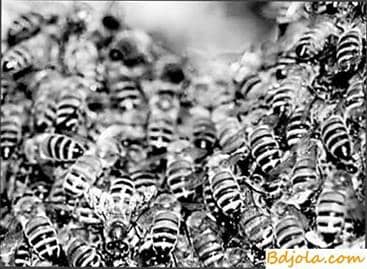 Frozen seeding is an indiscriminate disease, accompanied by the death of egg embryos in different stages of their development.
Frozen seeding is an indiscriminate disease, accompanied by the death of egg embryos in different stages of their development.
Causes of the disease. The cause of the disease is the hereditary properties of the uterus. Cross-permutation of frames from families with a dead seeded into normal families and vice versa it is established that the eggs of a normal family develop successfully in both families. On the contrary, the eggs of the uterus, which gave a dead seed, remain without further development in both families. The development of the embryo ceases and soon after the egg is laid by the uterus, and at a later date, ie, shortly before the larva leaves the egg.
It is also possible to simultaneously lay the same uterus of frozen seeding and normal. For example, during the laying of fertilized eggs in beehive cells, a dead seeding is formed, and when the unfertilized eggs are laid in droned cells, their normal development proceeds until the full formation of adult drones. This case shows that with the sperm of a drone can also be passed by inheritance frozen seeding.
Course of the disease. Unlike dry sowing, the disease lasts a long time. The disease is associated, according to most researchers, with hereditary properties of the uterus.
Diagnosis. Frozen seeding is not usually distributed to all eggs, but only to some of them. Therefore, the so-called motley brood can cause suspicion of the presence of infectious diseases or frozen seeding. In the latter case, at the bottom of the empty cells, one can find the dead brood in the egg stage.
The study of eggs under a magnifying glass makes it possible to determine the age of the deceased fetus.
Control measures. The queens that put the dead seeded are replaced.
Первый осмотр пчел весной. Весеннее расширение пчелиного гнезда.
Diseases of bees